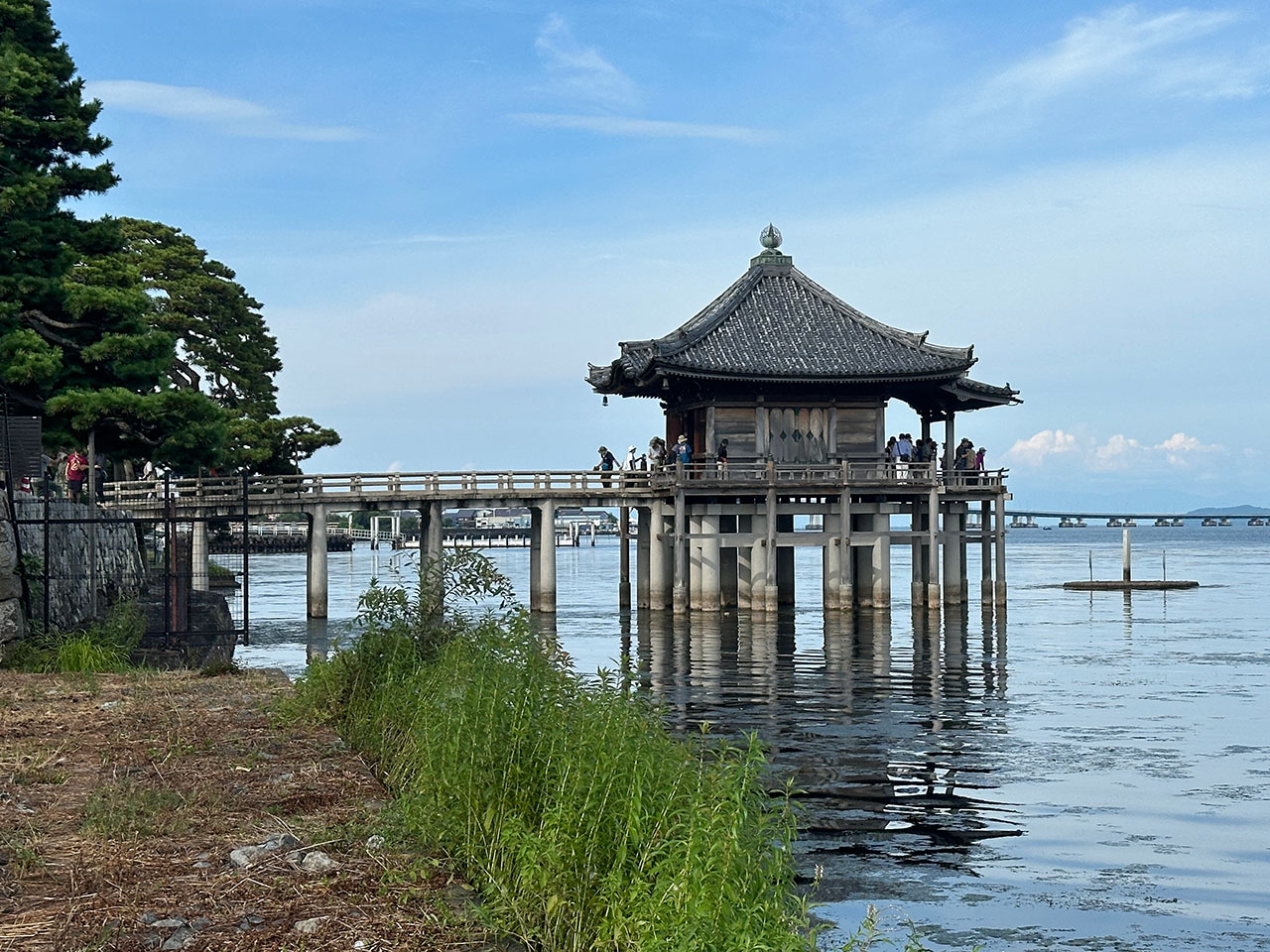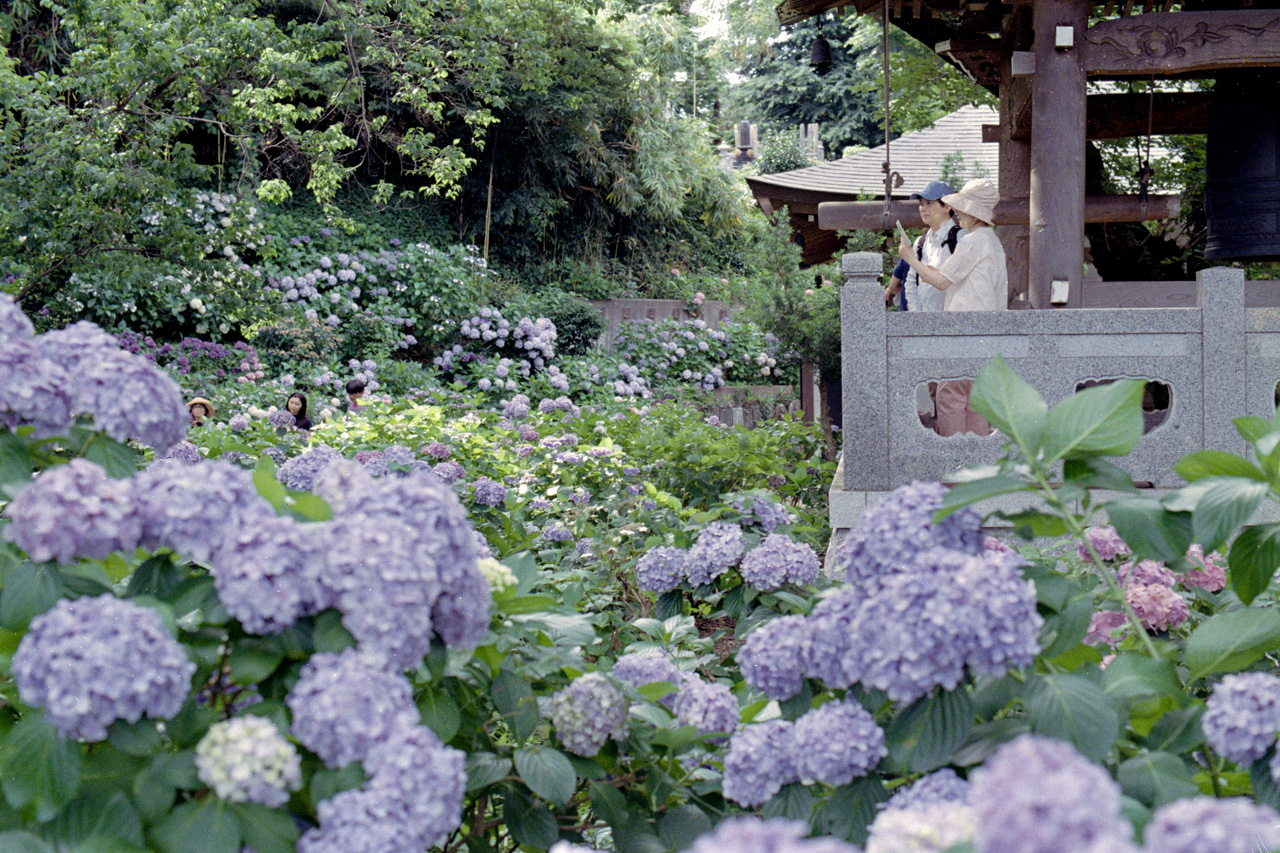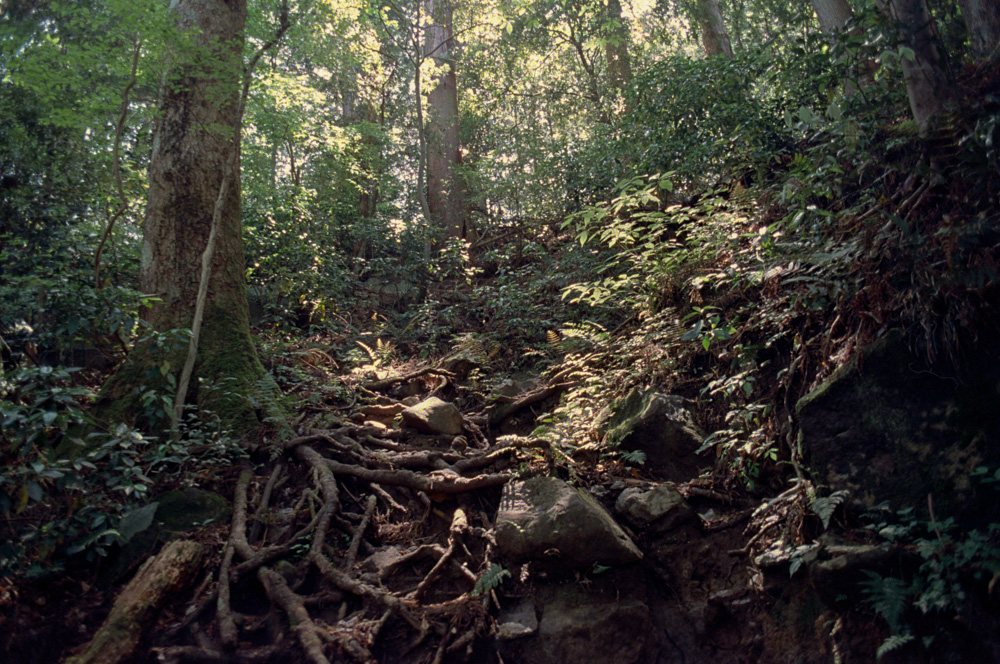Places | Article Archive
A thousand years old floating temple on Lake Biwa

Click here to watch the video of Ukimido on my YouTube channel
If you explore the shore of Lake Biwa, the largest freshwater lake in Japan, you’ll discover many scenic spots. One of these is in the city of Katata in Shiga Prefecture. About a 15-minute walk from Katata Station, you’ll find a temple called Ukimido, officially named Kaimonzan Mangetsu-ji. What makes this temple unique is its wooden “floating hall,” built on pillars over the lake. The temple was originally constructed over a thousand years ago, in 995. The story goes that the priest Genshin of Mount Hiei built this temple with a thousand Buddha statues (yes, a thousand!) as a navigational landmark, praying for safe travel on Lake Biwa and the salvation of all living beings. Inside Kannon-do Hall, there is an almost 1,000-year-old seated Buddhist statue of Sho Kannon, the Goddess of Mercy, which is considered an important cultural property of Japan.
The Hidden Temple of Hydrangeas

The rainy season in June and July, when the skies open up and drench the earth, is closely tied to the blooming of hydrangeas, or as the Japanese call them, ajisai. These flowers have been popular for centuries, and not just because they look pretty, but because they symbolize gratitude, apologies, and all those emotions we often keep bottled up inside. Hydrangeas don’t stick around for long. They quickly wilt and fade, reminding us of life’s fleeting nature and the importance of cherishing each moment. Interestingly, the Japanese have a unique way of enjoying hydrangeas: they bundle them together and float them in a shallow dish of water. It’s called ukibana, and it’s like a mini floating garden. In the Edo period, people even used them to create a special indigo color for paper and textiles. The color was highly prized. I wonder if they had to use a ton of flowers to get enough dye for one kimono.
Grave of Hattori Hanzo, Japan’s legendary samurai and master strategist
On a hill in Tokyo’s Shinjuku Ward, at a temple called Sainenji in a silent residential neighborhood, there is a small cemetery with the final resting place of Hattori Hanzo, undoubtedly the most famous military commander and samurai in Japanese history. He is often depicted as a ninja in popular culture (due to him also being the leader of a ninja clan), although there is no historical evidence to suggest that he was one. The grave sits on the side of a street that runs through the temple precincts. You could easily miss it if you walked past.
Just when I was walking towards the grave, a group of kindergarteners was taking a shortcut through the precincts, but of course they were far more interested in the autumn leaves scattered on the street than a lone grave of some famous samurai who happened to change the course of Japanese history centuries ago!
Bloody writings on stone monuments of the Komagome Fuji Shrine
It’s October and Halloween will be here soon, but I know you’re already in the mood for something scary. Let’s head out to Komagome in Tokyo’s Bunkyo ward.
The curse of Masakado
Who would have thought that Otemachi, Tokyo’s financial and business district that sits on some of the most expensive land in the world, seems to be forever haunted by the vengeful spirit of a samurai who died over a thousand years ago?
Keihin Fushimi Inari: the shrine of 108 playful foxes
Keihin Fushimi Inari Shrine is a relatively new shrine tucked away in the Shinmaruko neighborhood in Kawasaki, close to the border with Tokyo. If most of the shrines and temples around Japan date hundreds of years ago, you might be surprised to find out this one was established in 1951. There is a reason for that — after World War II, its first priest, Kanjo Tomizawa, decided to build the shrine here to revitalize the neighborhood and lift peoples’ spirits during times of postwar reconstruction.
Mitsumine Shrine: a mountaintop sanctuary with a deep connection to wolves
Mitsumine Shrine, located in the green mountains of Chichibu at the elevation of 1,100 meters, can be reached in three ways. One way that will obviously take a long time is by hiking via the main road or the various hiking paths through the mountains. Bonus points of bravery if you do this in hot, sweaty and humid Japanese summer. The second way, for all of you who own a private helicopter, you could try flying close to the top (yes, there’s a heliport not too far away). The third way that most of us will pick is by a car or a bus, as long as you don’t have motion sickness — the uphill road is super steep, full of zigzag turns, and will take about an hour and a half from Seibu-Chichibu Station. It is possible to come here on a day trip from Tokyo.
The abandoned Tokyo International Airport Information Office
We usually travel to the past, but this time let’s travel into the future.
It is now the dangerous year 2050, and the zombie apocalypse that has resulted from the unstoppable spread of the coronavirus known as SARS-CoV-2 following the botched prevention measures at the Tokyo Olympics 2020 2021, has left much of the world in ruins. For the past 29 years, all the attempts to suppress the super-pandemic have failed as the ruthless virus variant dubbed as the “Samurai Virus” raged throughout the planet, leaving only a small minority of humans unscathed.
Daiyuzan Saijoji Temple: a hidden gem in the ancient forest of giant cedar trees
It’s 6 o’clock in the morning. The early sunlight glimmers through the bright green leaves of the giant cedar trees, many of which have been standing here for hundreds of years. The sounds of birds singing can be heard from every direction, yet there is not a single bird to be seen.

Seitenkyu: Japan’s largest Taoist temple in an unlikely place
Congratulations! You won a ticket to one of the most colorful temples in Japan!